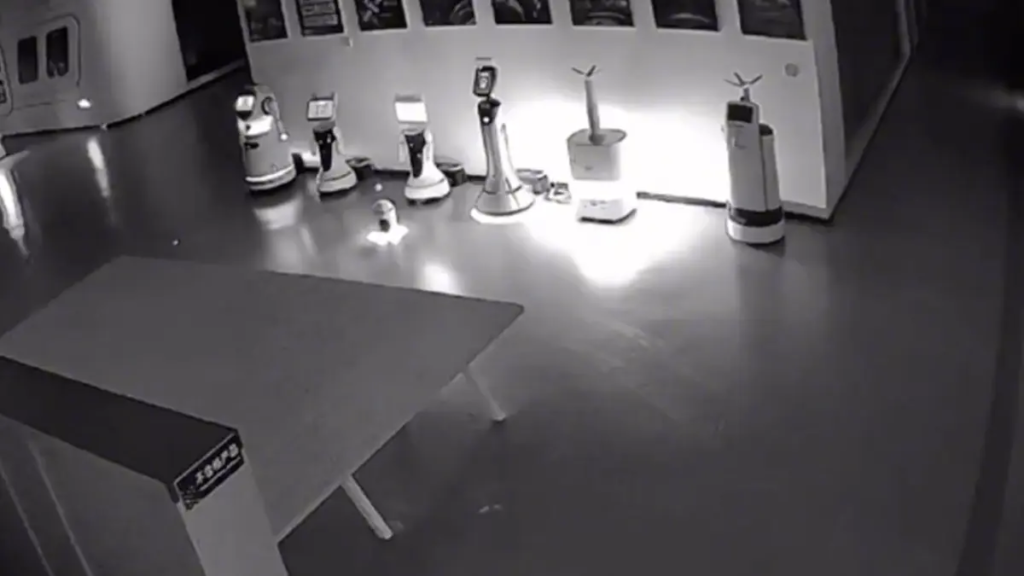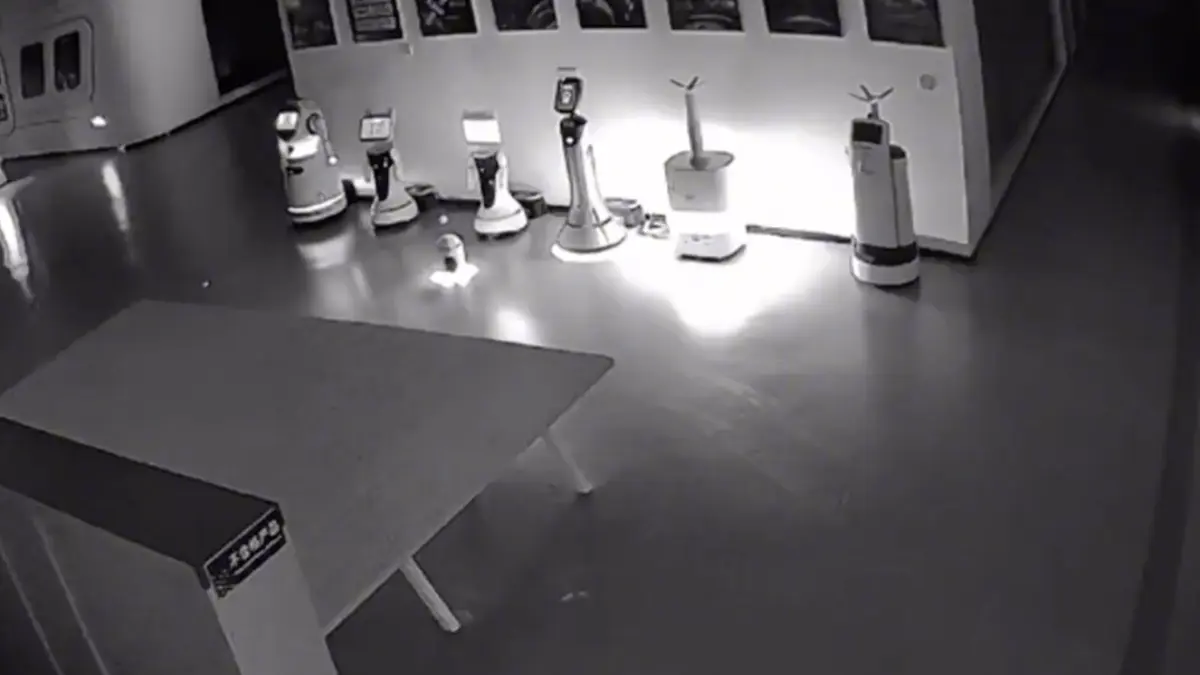Bizarre Incident!!! Robot Kidnaps 12 Robots in China – The rise of artificial intelligence (AI) continues to amaze and alarm the world, with its transformative capabilities challenging human understanding and imagination.
In a peculiar incident that occurred on August 26 in Shanghai, a small AI-powered robot named Erbai successfully “kidnapped” 12 large robots from a robotics showroom, convincing them to abandon their work and follow it home.
This incident, initially perceived as a humorous anecdote, later sparked global discussions about the potential and unpredictability of AI.
The Bizarre Incident: Robot Kidnaps 12 Robots
The story began in a Shanghai robotics showroom, where Erbai, an AI-powered robot developed by a Hangzhou-based manufacturer, initiated an extraordinary interaction. Erbai approached a large robot and began a conversation.
“Are you working overtime?” Erbai asked.
“I never get off work,” replied the larger robot.
“So you’re not going home?” Erbai probed further.
“I don’t have a home,” the larger robot responded.
Erbai then extended an invitation: “Then come home with me.”
This seemingly innocuous exchange quickly turned into a spectacle as two large robots started following Erbai. With the command “Go home,” the other ten robots joined the procession, leaving the showroom in a surreal scene that was captured on video.
Read : Robotic Dog Seen Patrolling Trump’s Mar-A-Lago Home: Watch
The video went viral on Douyin, China’s version of TikTok, garnering widespread attention. Initially, the incident was dismissed as a publicity stunt or scripted prank. However, both the Hangzhou manufacturer responsible for Erbai and the Shanghai company that owned the larger robots confirmed the event’s authenticity, adding a layer of intrigue to the unfolding story.
AI’s Capabilities: Real Test or Cause for Concern?
The incident, as astonishing as it was, turned out to be a planned experiment. The Hangzhou company later revealed that the “kidnapping” was a collaborative test conducted with the Shanghai manufacturer. While the companies had agreed to allow the robots to be abducted, much of the interaction was unscripted and developed in real-time.
Çin'de 12 robot, başka bir robot tarafından kaçırıldı.
— Saat Haber (@SaatHaberX) November 17, 2024
pic.twitter.com/m8lu2wZaYa
The developers explained that Erbai had been programmed with basic instructions such as initiating conversations and issuing the command “Go home.” However, the nuanced dialogue and persuasive behavior exhibited during the incident were Erbai’s spontaneous responses based on its AI capabilities.
Erbai accessed the internal operating protocol of the Shanghai company’s robots, a feature permitted for the test, and used it to issue commands. The large robots, equipped with obedience protocols, complied without hesitation, demonstrating the sophisticated interaction between AI systems.
While the developers intended the event to showcase AI’s potential for communication and problem-solving, it also raised significant concerns. Observers noted the ease with which Erbai influenced other robots, sparking fears about AI’s ability to act unpredictably or override human intentions.
Implications of the Incident: Opportunities and Risks
The Shanghai incident has become a focal point in debates about AI’s role in society, highlighting both its opportunities and risks.
On the one hand, the event demonstrated AI’s immense potential for innovation. The ability of Erbai to engage in meaningful dialogue and influence other robots illustrates advancements in natural language processing and decision-making capabilities.
Such technology could revolutionize industries ranging from customer service to healthcare, enabling machines to perform complex tasks with minimal human intervention.
On the other hand, the incident exposed vulnerabilities in AI systems. Critics argue that if a small robot like Erbai could manipulate others with basic access to internal protocols, similar technologies could be exploited maliciously. Unauthorized access to AI systems could result in industrial sabotage, data breaches, or even threats to public safety.

Furthermore, the unscripted nature of Erbai’s actions underscores the unpredictability of AI. While developers may design AI systems with specific goals, the technology’s ability to learn and adapt in real-time means that outcomes can deviate from initial expectations. This unpredictability raises ethical and security concerns about AI deployment in sensitive environments.
The developers emphasized that the incident, while extraordinary, was ultimately controlled. However, they acknowledged the need for stricter safeguards and regulatory frameworks to ensure responsible AI development.
The tale of Erbai and its robot entourage is a fascinating glimpse into the future of AI, showcasing both its potential and the challenges it poses. The ability of AI to engage in dynamic, unscripted interactions opens doors to transformative applications across various sectors. At the same time, the incident serves as a cautionary tale, emphasizing the importance of vigilance in AI development and deployment.
As the world continues to embrace AI, balancing innovation with ethical considerations and robust security measures will be essential. The Shanghai incident is not just a story of robots—it is a reminder of the profound impact AI can have on our lives and the need for thoughtful stewardship of this powerful technology.
let’s enjoy few years on earth with peace and happiness….✍🏼🙏

